50 F. high temperature Friday at KMSP.
69 F. average high on May 13.
67 F. high on May 13, 2015.
.18" rain fell yesterday at Twin Cities International.
May 14, 2013: Minneapolis sets a record high temperature of 98 degrees, breaking the previous record of 95 set in 1932.
Frozen Fish: Less Sunscreen, More DramamineThe
Minnesota Fishing Opener is tradition; the true start to the summer
season. A chance to bond with friends and family - reconnect with nature
- freeze your tuckus off while slurping a cold one.
At some point
this morning you may envy the walleye as temperatures dip below
freezing on northern lakes, a wind chill in the 20s; light frost forming
on the tip of your dozing uncle's nose. This will be one of the
chillier Fishing Openers in recent memory.
Freeze Warnings are
posted for central and western counties this morning, but a light breeze
coupled with the urban heat island should reduce the odds of a killing
frost within 30 miles of Minneapolis and St. Paul. Expect peeks of sun
today with highs stuck in the 40s. After another brush with frost in
outlying suburb
s Sunday morning afternoon temperatures approach 60F under blue sky.
Next
week Mother Nature will attempt to make up for recent transgressions:
sloppy storms pass south of Minnesota. I expect a dry week with 60s; 70s
by the end of the week - maybe 80
F next Sunday with a dash of humidity and thunder? Hang on.
Frost Advisory for MSP.
This morning will probably wind up being the coldest morning, in spite
of a stiff breeze (which may keep the air sufficiently stirred up to
prevent widespread frost in the immediate metro area). A few hours
colder than 28-30F for central and western Minnesota may create a freeze
scenario - impact on emerging plants is still unclear. Map:
AerisWeather AMP.
Walleye Chop.
Winds this morning will be sustained around 15 mph, with higher gusts
by afternoon. Cold and choppy on your favorite lake. Model guidance:
NOAA and Aeris Enterprise.
Flurries and Showers.
4 KM NAM model guidance shows an atmosphere cold enough for flurries
this morning, especially over the Minnesota Arrowhead. A band of
instability (rain) showers blossoms over the Red River Valley this
afternoon, pushing into central Minnesota by evening.
Welcome Warming Trend.
Is there anyone out there who isn't relieved to see this graphic,
showing ECMWF predicted lows and highs into Sunday? We may nudge 60F
Sunday, consistent 60s next week before a run of 70s by next weekend.
Graphic: WeatherBell.
Spring Bounces Back Next Week.
GFS and NDFD guidance suggests low 80s by 4 pm next Sunday. From a hard
freeze to 80s in the span of a week, factoring wind chill nearly a
60-65F rise. Even for Minnesota that's pretty impressive.
Dry Spell Returns.
Last week was the definition of depressing; GFS guidance keeps
significant rain to our south next week; more soaking rains for
flood-weary counties of Texas and the Gulf Coast. 10-day accumulated
rainfall loop: NOAA and AerisWeather.
May Mellows.
500 mb winds roughly 2 weeks out (GFS) continue to suggest ridging from
the Great Plains into the Midwest by late month; 70s the norm with a
few 80s possible.
Welcome Rains Arrive. Here's an excerpt of Mark Seeley's latest post at
Minnesota WeatherTalk: "
After
starting the month with 8 consecutive dry days, interspersed with some
record-setting high daily temperatures (90s F in many areas), and low
relative humidity (7-15 percent range) some widespread welcome rains
blanketed the state this week. Total amounts were generally less than an
inch in many northern and central counties, but many southern Minnesota
observers reported over 2 inches, including Pipestone, Worthington,
Albert Lea, Fairmont, New Ulm, St James, and Caledonia. A handful of
observers reported over three inches for the week including Windom,
Lakefield, and Sherburn (3.93”)..."
Photo credit: Mike Hall.
La Nina Watch Issued by NOAA Climate Prediction Center. Here's an excerpt of the
latest statement, showing a continued cooling trend in the waters of the equatorial Pacific: "
La
Nina is favored to develop during the Northern Hemisphere summer 2016,
with about a 75% chance of La Nina during the fall and winter 2016-17.
During the past month, sea surface temperatures (SST) anomalies
decreased across the equatorial Pacific Ocean, with near-to-below
average SSTs recently emerging in the eastern Pacific..."
The 2016 Atlantic Hurricane Season. Scientist and writer Greg Laden has an interesting post at
scienceblogs.com; here's the intro: "
This
year’s Atlantic Hurricane season will be stronger, forecasts suggest,
than that of the previous two years, and stronger than the average year.
The Atlantic Hurricane Seasons starts on June 1st. But, there was a
hurricane that happened already, either late in last year’s season or
very early in this year’s season, called Alex. That hurricane had to go
somewhere, and I suppose the keepers of the records had already put
their spreadsheet to bed when Alex came along on January 7th, so that
storm gets counted as part of the season that will nominally start at
the beginning of next month..."
Image credit: "
The
following graphic shows the relationship between the median number of
named storms predicted each year by those three sources and the actual
number of named storms in the Atlantic."
Twister Chasing in Tornado Alley. Josh Edelson at
AFP
takes us along for the frustrations, terror and temporary euphoria of
an ultimately successful tornado chase; here's an excerpt: "...
As
far as taking pictures, it was a challenging situation. I was soooo
excited to finally see one after all these days waiting and all of the
sudden I had to think about things like what lens to use, what aperture
setting, what shutter speed, the ISO, how to compose the shot. At one
point, I was shooting and I realized that for the past five minutes I
had been shooting in manual focus and I thought, “Damn, did I just blow
the whole thing?” (Luckily I didn’t). As I was shooting, I tried to also
just take it all in. It was just monstrous -- there was no end to it,
it just melded into the sky, ominous and otherworldly..."
Photo credit: AFP / Josh Edelson.
Toilet Bowl Saves Oklahoma Teenage Boy's Life During EF-3 Tornado. Here's an excerpt of a story at
Christian Post that made me do a double-take: "
A
toilet bowl served more than just a depository of human waste and
excess body fluids after it saved a life of an autistic boy in the midst
of strong tornado. Daniel Parks, an 18-year-old autistic teenage boy,
was spared from imminent demise after he hid in their bathroom and
hugged the toilet bowl as an EF-3 tornado ravaged a rural area 80 miles
south of Oklahoma City, as per Buzzfeed.
"We are all safe! My house on the other hand is leveled. Nothing left,"
posted the mother of Parks, Angela, on her Facebook account at the
aftermath of the disaster..."
 Severe Weather Outbreaks are Spawning More Tornadoes
Severe Weather Outbreaks are Spawning More Tornadoes.
Natural variation or symptoms of additional heating and instability
associated with warming? Here's an excerpt of an interesting post at
WXshift: "...
Observations over the past few decades have yielded an interesting trend. While there are fewer days with tornadoes, there are more tornadoes on those days.
Because there have been changes in how tornadoes are reported and
detected, researchers eliminated the weakest tornado classification on
the Enhanced Fujita scale known as EF0 tornadoes (or F0 before 2007 on
the original Fujita scale). Since the early 1970s, the average annual
number of days with at least one EF1 or stronger tornado has dropped
from 150 to 100. Yet, there has been an increase in the number of days
with a very high number of tornadoes. In the 1970s, the average number
of days with more than 30 EF1 or stronger tornadoes was a fraction less
than one, meaning they weren’t even a yearly occurrence on average. In
the last decade, that number had jumped to three days each year..."
Image credit: "
While there are fewer days each year with tornadoes, on average, the number of days with more than 30 tornadoes is increasing." Credit:
Climate Central
2016 Tornado Activity Remains Below Normal Despite Recent Outbreak. Here's an excerpt of a timely reality check from
WHNT.com in Huntsville, Alabama: "...
Despite the recent rash of tornadoes in parts of the country, tornado activity in 2016 is still below average. According to the Storm Prediction Center,
between 2005 and 2015, an average of 604 tornadoes occurred each year
through May 10. This year, 438 have occurred through May 10. The tornado
count through May 10 of this year is higher than it was through the
same date in 2015, 2014, 2013, 2010 and 2005. Six out of the past 11 years had higher numbers of tornadoes through May 10 than we've had in 2016."
What's It Like Living Through a Category 5 Hurricane? The National Press Club has an audio interview with a Cyclone Winston survivor in Fiji: "
Cyclone
Winston is the worst storm ever recorded in the southern hemisphere. It
had sustained winds of 185 miles an hour and killed 42 people. It also
destroyed thousands of homes in Fiji, left many people without water and
electricity and forced tens of thousands of Fijians to live in
evacuation centers. Irshad Hussain, a radio station manager in Fiji,
talks to Broadcast Committee member Irv Chapman about his experience
surviving the category 5 storm. He was at the station when the cyclone
hit on February 20, damaging the station's antenna and knocking it off
the air in parts of the Pacific Islands. Hussain explains in detail what
it was like when the cyclone hit, how the media have covered the story
and how Fiji is recovering."
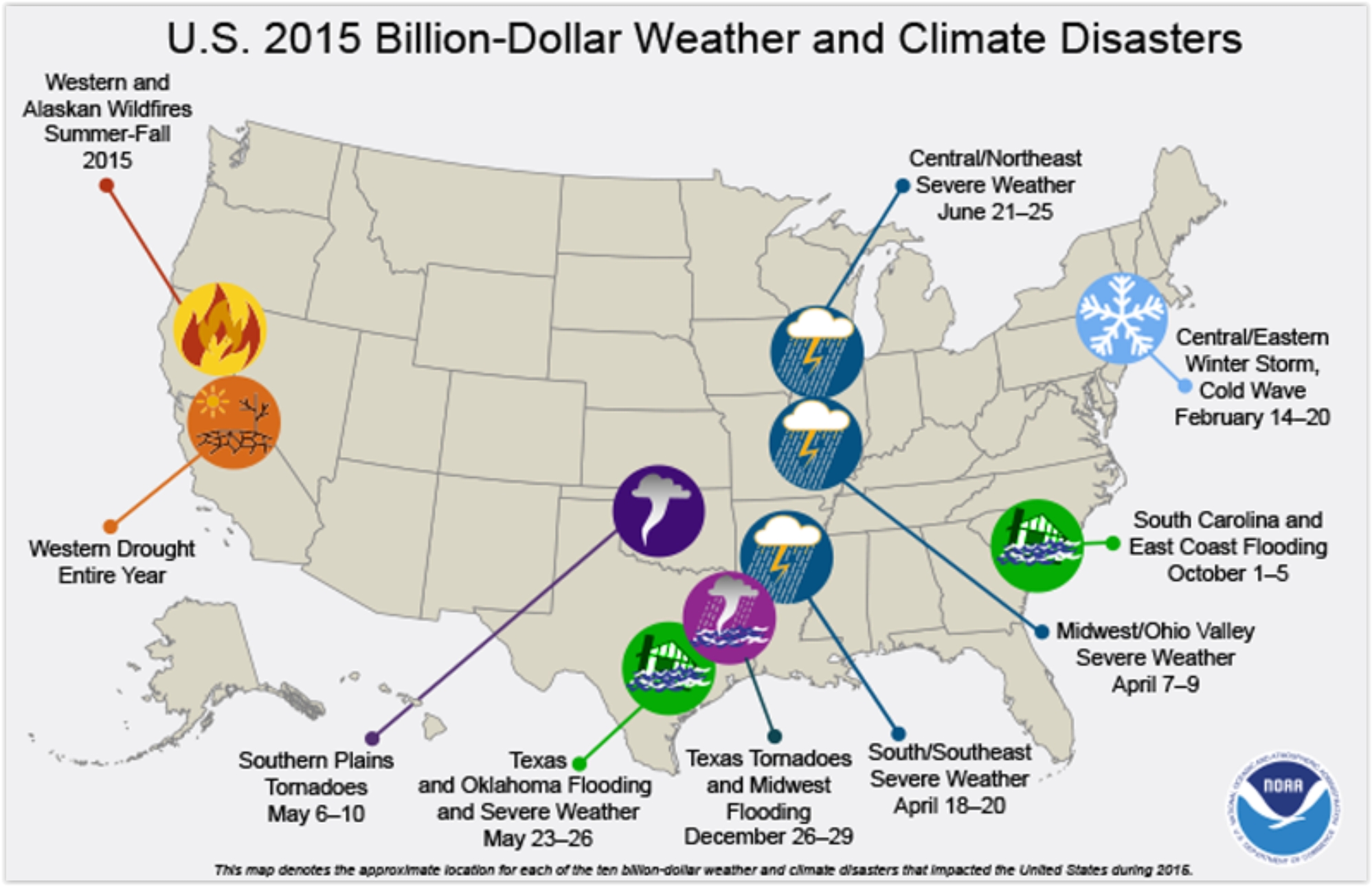 Billion Dollar Weather and Climate Disasters in 2015
Billion Dollar Weather and Climate Disasters in 2015. Here's a highlight of a recent summary from
NOAA: "
In
2015, there were 10 weather and climate disaster events with losses
exceeding $1 billion each across the United States. These events
included a drought event, 2 flooding events, 5 severe storm events, a
wildfire event, and a winter storm event. Overall, these events resulted
in the deaths of 155 people and had significant economic effects on the
areas impacted. The 1980–2015 annual average is 5.2 events
(CPI-adjusted); the annual average for the most recent 5 years
(2011–2015) is 10.8 events (CPI-adjusted). Further cost figures on
individual events in 2015 will be updated when data are finalized..."
Air Pollution Rising at an "Alarming Rate" in World's Cities. Here's a clip from a story at
The Guardian: "
Outdoor
air pollution has grown 8% globally in the past five years, with
billions of people around the world now exposed to dangerous air, according to new data
from more than 3,000 cities compiled by the World Health Organisation
(WHO). While all regions are affected, fast-growing cities in the Middle
East, south-east Asia and the western Pacific are the most impacted
with many showing pollution levels at five to 10 times above WHO
recommended levels..."
Map credit above: "Annual
mean concentration of fine particulate matter (2.5 micrometres or less)
in micrograms per cubic metre for 3,000 towns and cities around the
world."
* The report at The World Health Organization (WHO) is
here.
The Heartland of America is "100% Clean Energy Ready". EcoWatch reports on a growing trend: "...The
long and ultimately victorious fight to stop the Keystone XL pipeline
inspired the Tanderups to install their own large solar array on the
farm and to get an electric vehicle that could be charged entirely by
the sun. “The Keystone XL fight will not be over until we have
transitioned to 100 percent clean energy,” said Art Tanderup. “Dirty
fuels are bad for our farms and our communities—and the farmers,
cowboys, Indians, and others who stood up to TransCanada are now
standing up for what’s right for the Midwest. We need to create clean,
healthy, American-produced energy right here in the Heartland. Clean
energy is no longer a thing of the future—it’s powering Heartland farms
and families today...”
Photo credit: "
Nebraska
farmers in Keystone XL battle carve a massive crop art message into an
80-acre cornfield calling for 100% clean energy for all." Photo credit: Tom Simmons / Spectral Q.
The "Clean Energy Miracle" Is Already Here. Joe Romm at
ThinkProgress makes a compelling case; here's an excerpt and link to Part 2 of his ongoing series: "...
The mainstream media generally has a bias towards bad news — if it bleeds it ledes,
goes the saying. You have to wait an awfully long time on the evening
news — or indeed most news shows and media outlets — to see “good news.”
As a result, they rarely cover the solar energy “miracle” or the wind
energy “miracle” because they think they already did that story years
ago. Almost everybody is behind the curve — literally. The U.S. Energy
Information Agency (EIA) consistently underestimates
renewables growth in its projections. Solar and wind have been
continuously outperforming expectations for so long that even the
International Energy Agency (IEA) — a world leader in analyzing clean
energy trends — itself keeps underestimating what’s about to happen year
after year..."
Image credit: "
Global EV sales, 2011-2015". (Source: energy.gov via
insideevs.com).
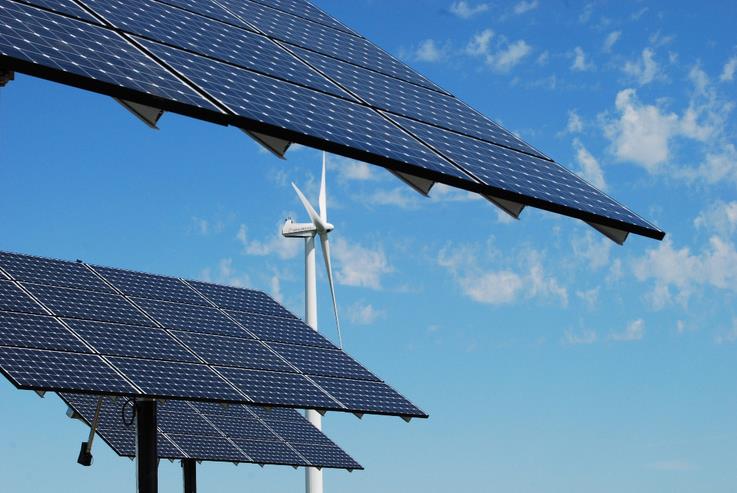 Republicans Need to Embrace Renewables - On Their Terms
Republicans Need to Embrace Renewables - On Their Terms. Here's an excerpt from
TheHill: "...
On
the other hand, there's the reality of a shift in public opinion and a
changing energy landscape. A recent Gallup poll showed that 73 percent
of Americans and 51 percent of Republicans support the development of
renewable energy. It reasons, then, that Republican candidates who
oppose renewables are not only out of step with general election voters,
but with their own party. If it's an issue the electorate cares about
and supports, Republicans need to recognize it and understand the
evolving profile of our 21st-century energy mix. If not, they risk the
issue being a factor in November, especially with general-election
voters. This is especially important for vulnerable Senate candidates
who herald from states that Obama won big in the 2012 election..." (File photo: MN.gov).
Public Health Professor: Because of Zika, Rio Olympics "Must Not Proceed". No sugar-coating here, as explained at
NPR: "
Amir
Attaran, a professor in the School of Public Health and the School of
Law at the University of Ottawa, isn't afraid to take a bold stand. He
has written a commentary
for the Harvard Public Health Review, published this week, with the
headline, "Why Public Health Concerns for Global Spread of Zika Virus
Means that Rio de Janeiro's 2016 Olympic Games Must Not Proceed." The
World Health Organization is soon expected to release a statement with
guidance on travel to the Olympics..."
Should the 2016 Summer Olympics Still Be Held in Rio?
With additional perspective (that makes me happy to watch the spectacle
on television, but wondering how I would feel if I had a son or
daughter participating in the games) here's an excerpt of an Op-Ed at
The Washington Post: "...
Still,
there are two reasons why I suspect that Attaran is not overreacting.
The first is that a big global gathering like the Olympics seems tailor
made to spread the disease. Normally when an epidemic breaks out, the
concern is that people will travel from the infected area to other
places to spread the disease, and whether other governments are
overreacting to that migration. Indeed, that’s the cause of the myriad
epidemiological freakouts that have occurred this century: SARS, H1N1,
Ebola, etc. This is a different question. This is all about whether it’s
a good idea to have a major global event in a city
that is in the middle of this kind of outbreak. This strikes me as a
different kind of debate. Is it really such a hot idea to have a
significant global gathering in the middle of a hot zone?..."
Photo credit: "
Municipal workers wait before spraying insecticide at Sambodrome in Rio de Janeiro on Jan. 26." (REUTERS/Pilar Olivares)
The Mask You Live In.
What does it mean to be a man in today's culture? What are we teaching
our sons about what it means to live a successful, full and happy life? I
watched this film on Netflix - it's worth your time to check it out.
Details and the trailer from
The Representation Project: "
The
Mask You Live In follows boys and young men as they struggle to stay
true to themselves while negotiating America's narrow definition of
masculinity. Research shows that compared to girls, boys in the U.S.
are more likely to be diagnosed with a behavior disorder, prescribed
stimulant medications, fall out of school, binge drinke, commit a
violent crime, and/or take their own lives..."
The Mask You Live In
follows boys and young men as they struggle to stay true to themselves
while negotiating America’s narrow definition of masculinity.
Research
shows that compared to girls, boys in the U.S. are more likely to be
diagnosed with a behavior disorder, prescribed stimulant medications,
fail out of school, binge drink, commit a violent crime, and/or take
their own lives.
- See more at: http://therepresentationproject.org/film/the-mask-you-live-in/#sthash.ZGtWTUKu.dpuf
The Mask You Live In
follows boys and young men as they struggle to stay true to themselves
while negotiating America’s narrow definition of masculinity.
Research
shows that compared to girls, boys in the U.S. are more likely to be
diagnosed with a behavior disorder, prescribed stimulant medications,
fail out of school, binge drink, commit a violent crime, and/or take
their own lives.
- See more at: http://therepresentationproject.org/film/the-mask-you-live-in/#sthash.ZGtWTUKu.dpuf
The World's Most Romantic Socks are Knitted on an Active Volcano.
I miss the good 'ol days, when my wife would knit my socks. Now I'm
barefoot most of the time. Which got me thinking about a recent
Atlas Obscura article: "...
Socks
were the garment of choice for young lovers. Traditionally, a woman
would knit a pair for her intended paramour, adding as many stripes as
she saw fit. If the target of her affection felt good about the stripe
situation, he would signal his acceptance by knitting a pair of
moccasins for the young lady. According to official love socks lore,
"The young lady would then offer to wash his clothes and this was a
sign that they were formally engaged and a marriage would follow shortly..."
Photo credit: "The famous socks." (Photo: Courtesy of Dawn Repetto).
This Scientist Has Created Speakers that Spew Scents, Not Sounds. What about knitted socks? Here's another excerpt of a wonderfully head-scratching article at Atlas Obscura: "David
Edwards is obsessed with olfaction. The Harvard University professor
has spent the last five years building a library of digital smells. The
goal? To figure out a way to transmit those aromas through
technology—carrying and communicating scent memories through the air. Now, he has stored a selection of these scents on a “scent speaker” called Cyrano. The
device emits olfactory notes, which you can arrange into playlists on a
smartphone app. With a few bursts, a home stereo system in a New York
City apartment can evoke the scents of a Hawaiian vacation, or a
Christmas market in Germany..."
Photo credit: "Cyrano is David Edwards new invention to communicate through scent." (Photo: © Wayne E. Chinnock/Vapor Communications).
 TODAY
TODAY: Chilly with gusty winds and more clouds than sun, walleye chop. Winds: NW 10-20. High: 49
SATURDAY NIGHT: Clearing and unseasonably cold - frost possible outlying suburbs. Low: 35
SUNDAY: Slight frost risk, partly sunny and milder by late afternoon. Winds: NW 8-13. High: 59
MONDAY: Unsettled, risk of a PM shower. Winds: NW 5-10. Wake-up: 45. High: 63
TUESDAY: More blue sky, quite pleasant. Winds: NE 5-10. Wake-up: 47. High: 64
WEDNESDAY: Plenty of mild sunshine. Winds: S 5-10. Wake-up: 46. High: 68
THURSDAY: Spring fever returns in full force. Winds: S 10-15. Wake-up: 51. High: 72
FRIDAY: Cabin-worthy weather. Mild sun. Winds: SE 10-15. Wake-up: 53. High: 75
Climate Stories...
Obama Administration Issues New Rules on Methane Emissions from the Oil and Gas Industry. The rules only apply to new point sources, as explained at
VICE News: "
The
Obama administration issued new rules on Thursday for reducing
climate-warming methane emissions from the oil and natural gas sector,
continuing its string of executive branch actions aimed at addressing
climate change. The regulations cover only new or substantially modified
oil and gas facilities: wells, processors, storage facilities, and
pipelines. The administration says it will be up to the next president
to lead the charge on reining in emissions from existing sources. US
Environmental Protection Agency Administrator Gina McCarthy said the
rules highlight President Barack Obama's commitment to addressing
climate change, and limiting pollutants that compromise public health..."
Photo credit: Charles Rex Arbogast/AP.
Just Because Sea Level Rise Threatens Miami Doesn't Mean the City Should Give Up. Here's a snippet of an Op-Ed at
Miami New Times: "...
We
know Miami (and, indeed, most of the southern half of Florida) is
particularly vulnerable to climate change. We do not, however, know
exactly when the effects will become untenable. There may be a
scientific consensus on man-influenced climate change and sea-level
rise, but there isn't scientific consensus on a timeline. In any event,
it seems most likely that Miami will continue to be a functioning city
that is home to millions of people for the next few immediate decades
(which translates to a large chunk of human life, if not longer)..."
Photo credit: Carolina del Busto.
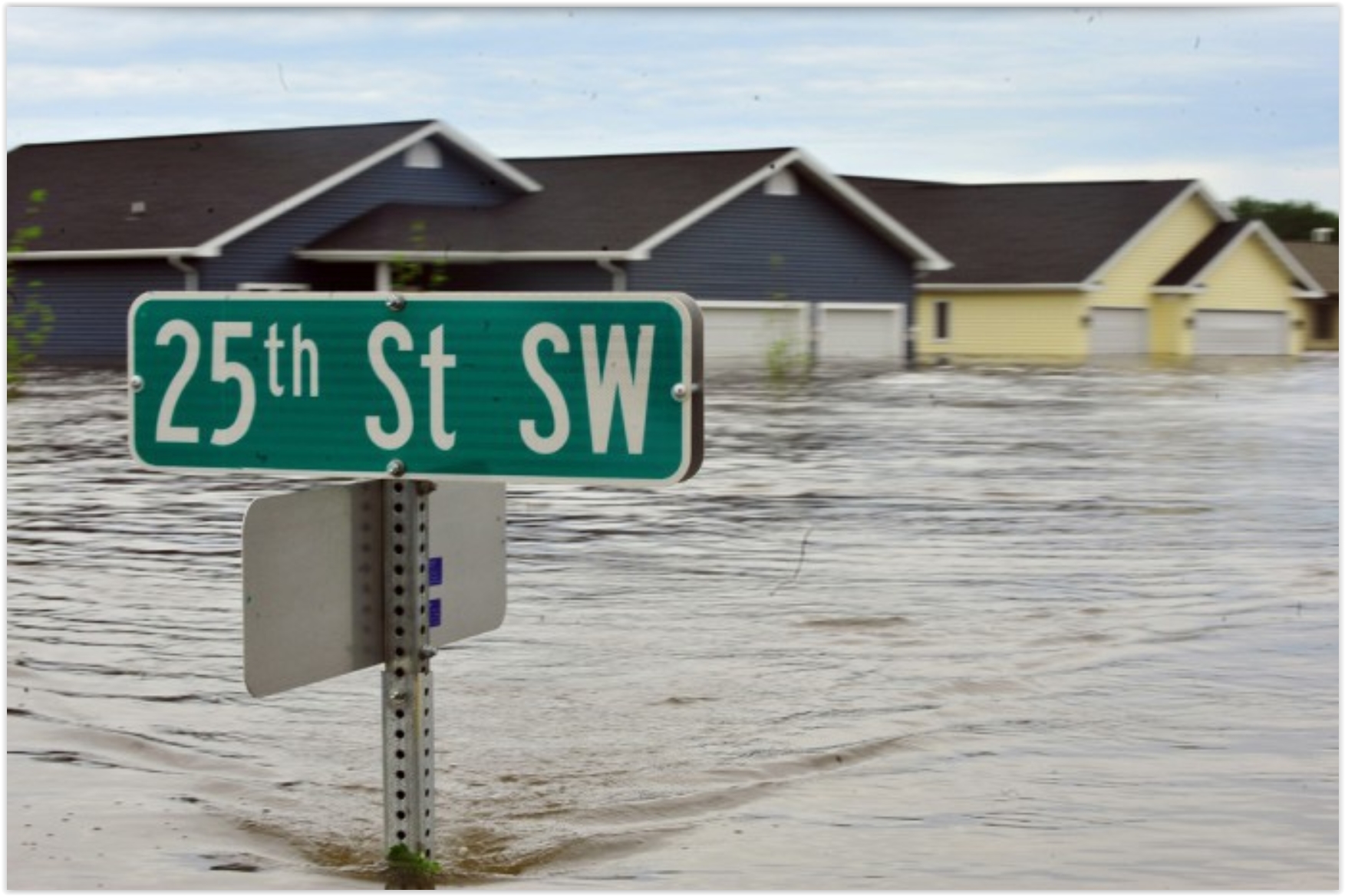 Freddie Mac Economist Warns of Housing Crisis Caused Sea Level Rise
Freddie Mac Economist Warns of Housing Crisis Caused Sea Level Rise.
New-Times Broward Palm Beach has the story; here's a link and excerpt: "...
In an April "Insight" report
by Freddie Mac, the government-sponsored home loan agency, its chief
economist warned of sea levels and flooding reaching a point where
properties becomes uninsurable and unmarketable, causing homeowners to
begin defaulting on their mortgages. This would instigate another
housing crisis—except this time, it'd be unlikely that housing prices
ever recover. Sean Becketti, Chief Economist, Freddie Mac said in a
statement: “In the housing crisis, a significant share of borrowers
continued to make their mortgage payments even though the values of
their homes were less than the balances of their mortgages. It is less
likely that borrowers will continue to make mortgage payments if their
homes are literally underwater. As a result, lenders, servicers and
mortgage insurers are likely to suffer large losses…"
Photo credit: DVIDSHUB via Wikipedia Commons.
Fractures Seen in Rapidly Melting Sea Ice, and It's Only May. Andrew Freedman has the story at
Mashable; here's a clip: "
Even
accounting for the accelerating pace of Arctic climate change, sea ice
loss in the Far North is running well ahead of schedule. This may signal
a near record or record low sea ice extent to come in September.
Fractures in the ice cover are evident north of Greenland, which Mark
Serreze, the director of the National Snow and Ice Data Center in
Boulder, Colorado, told Mashable are "quite unusual" for this time of
year..."
How Scared or Hopeful Should We Be in a Warming World? The Conversation asks the rhetorical question; here's the intro: "
For
anyone who takes notice of the climate change debate, a mass of
often-contradictory information comes flooding into our lives. Some of
it prompts great alarm. The Great Barrier Reef is suffering severe
bleaching. Wild fires are consuming Alberta. Last year was the warmest
on record, and 15 of the 16 hottest years on record have occurred since
2001. Yet there are also some positive signs that the world is at last
getting serious about the threat. Global investment in renewable energy
last year exceeded investment in fossil energy for the first time. Coal
use in the United States is falling rapidly..."
Should We Respond to Climate Change Like We Did WWII?
Are we moving fast enough? Most scientists say no; the markets are
moving inexorably toward renewables and clean energy, prices are
dropping, adoption rates are increasing, but how do we turn up the dial
and move even faster? Here's a clip from
New Republic: "...
This may sound far-fetched, but Brown believes we’re at a tipping point for climate mobilization. The economy is increasingly favoring renewables over fossil fuels, and grassroots campaigns like the Divestment Movement are gaining steam. Any
number of circumstances could push the globe over the edge toward
mobilization: severe droughts that create conflicts over water, or the
accumulation of climate catastrophes from raging fires to hurricanes.
When we cross over, Brown told me, “suddenly everything starts to move.
... We’re just going to be surprised at how fast this transition goes.” For environmentalists who’ve seized upon Brown’s idea, the transition has not been fast enough..."
The Vicious Cycle That Makes People Afraid to Talk About Climate Change. Chris Mooney explains at
The Washington Post;
here's an excerpt: "...In a nutshell, Geiger and Swim find that people
are often afraid to talk about climate change with their peers because
they wrongly think those peers are more doubtful about climate change
than they actually are. This incorrect perception — which the authors
dub “pluralistic ignorance” — then makes people fear that others will
think they’re less competent, and thus, view them with less respect, if
they bring up the subject or talk about it. And then, that cascades and
suppresses interpersonal conversations that might otherwise help put the
issue more on the agenda..."
File Photo: Jenna Dorsey.
University of Minnesota Professor Leads Team to High Arctic to Teach About Climate Change. Here's an excerpt from Canada's
CBC News:
"A University of Minnesota professor and his team endured whiteouts and
snow flurries as they trekked through the High Arctic to document how
communities are finding solutions in the face of climate change. Last
month Aaron Doering and his team flew into Arctic Bay, then trekked 238
km to Pond Inlet — some on skis, others with snowshoes. They carried
everything they needed to survive on the land with them on a sled. "We
endured everything of the Arctic," said Doering."From complete whiteout
to snow to sunshine." Doering dubs himself an adventure-learning
pioneer, and he has been all across Canada's Arctic..."
Photo credit: "
We endured everything," said Doering. "From complete whiteout, to snow, to sunshine." (The Changing Earth).
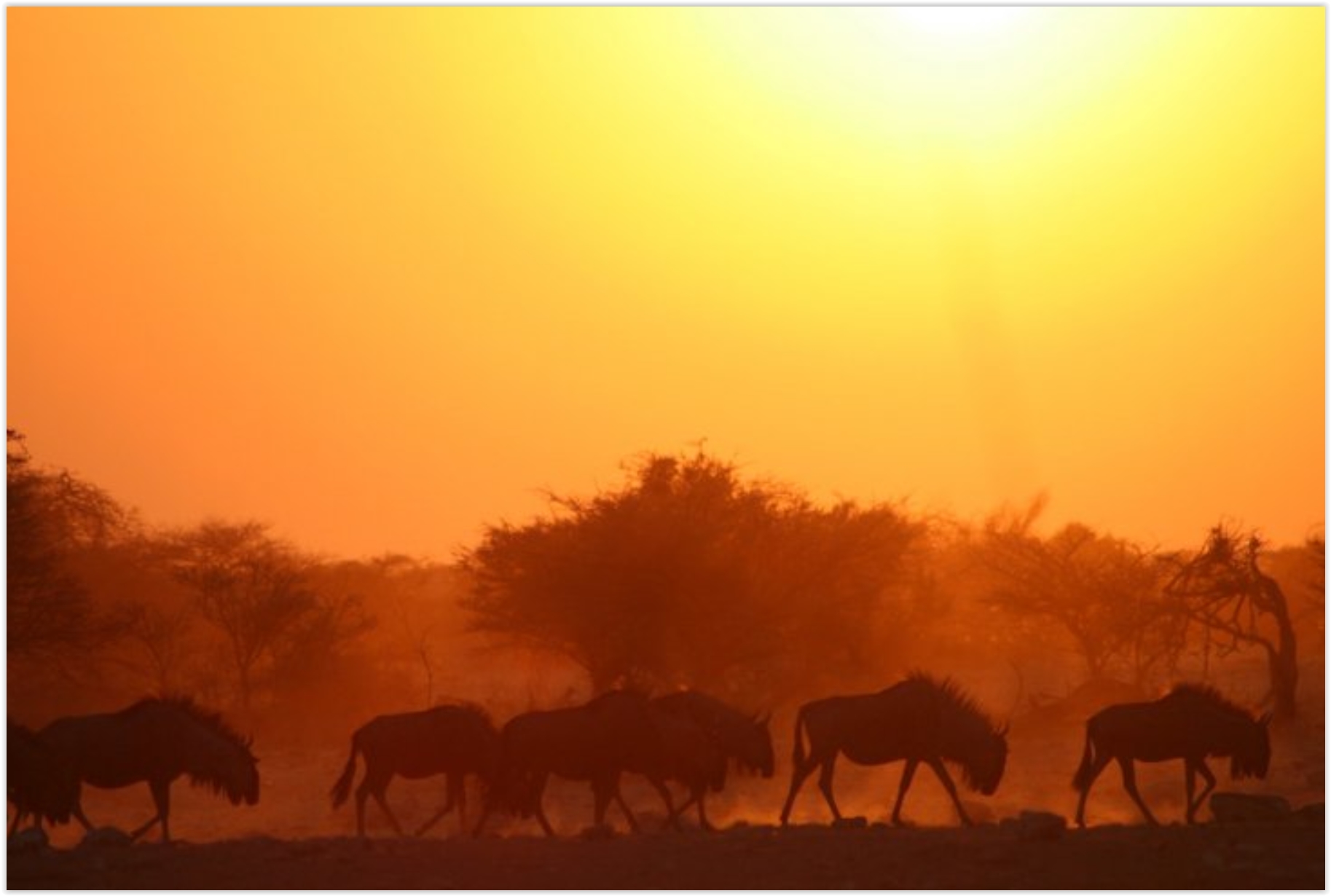 Climate Change: Extreme African Heatwaves May Spark "Humanitarian Crisis of Unknown Dimensions".
Climate Change: Extreme African Heatwaves May Spark "Humanitarian Crisis of Unknown Dimensions". Alarmist hype? Stay tuned. Here's an excerpt of a summary of recent research at
International Business Times: "
Extreme
heatwaves in Africa could take place once every year by 2040, and four
times every year by the latter quarter of the century. Scientists warn
that these dangerously hot temperature spells could result in a
"humanitarian crisis of unknown dimensions". Because of its geographical
position between the tropics, solar radiation is always high. This
means that heatwaves can take place at any time of the year.
Furthermore, in the last 50 to 100 years, surface temperatures across
most of the continent have increased by 0.5C or more..."
Photo credit above: "
Africa could have four heatwaves each year by 2075." Gareth Beynon/Flickr.
How To Respond to a Ridiculous Climate Change Argument. Where to begin. Here's an excerpt from
GOOD: "Climate change deniers often say, "
The
Earth has always been warming and cooling, this isn't any different!"
Well, this new era of global temperature rise is different. The video
above will lead you through the last seven cycles of warming and cooling
across the planet, and it is indeed natural for Earth to oscillate
between ice ages and warmer periods in which plants and animals (human
and quadruped alive) thrive. But ever since the Industrial Revolution
something extra bad has been going on, and both carbon
dioxide and atmospheric temperatures have risen together at historically
(and we do mean historically) staggering rate..."
Global Warming Cited as Wildfires Increase in Fragile Boreal Forest. Justin Gillis and Henry Fountain have the story at
The New York Times; here's the introduction: "
Scientists have been warning
for decades that climate change is a threat to the immense tracts of
forest that ring the Northern Hemisphere, with rising temperatures,
drying trees and earlier melting of snow contributing to a growing
number of wildfires. The near-destruction of a Canadian city last week
by a fire that sent almost 90,000 people fleeing for their lives is grim
proof that the threat to these vast stands of spruce and other resinous
trees, collectively known as the boreal forest, is real. And scientists
say a large-scale loss of the forest could have profound consequences
for efforts to limit the damage from climate change..."
Photo credit: "Charred
trees near Fort McMurray, in Alberta, Canada. Climate change is a prime
suspect in a rise of wildfires in the boreal forest." Credit Ian Willms for The New York Times.
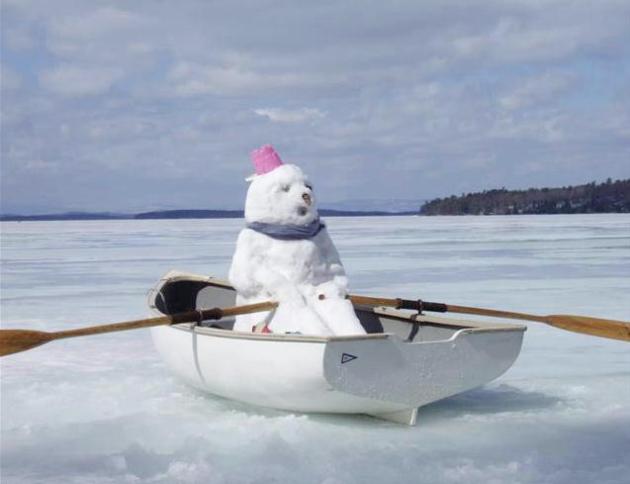
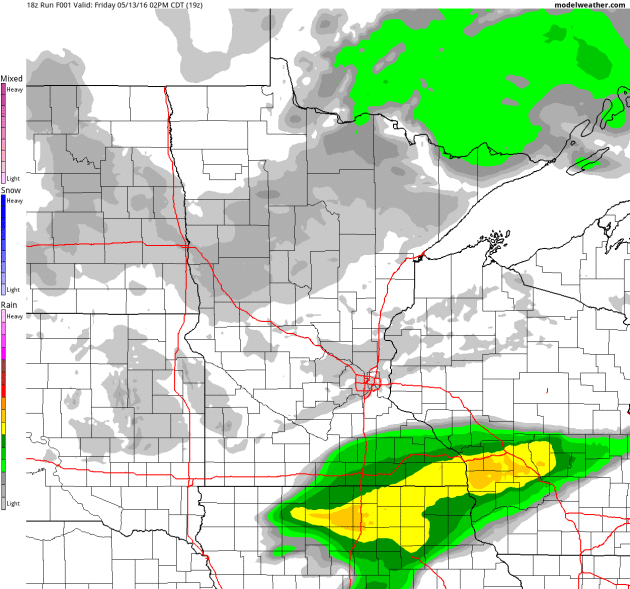

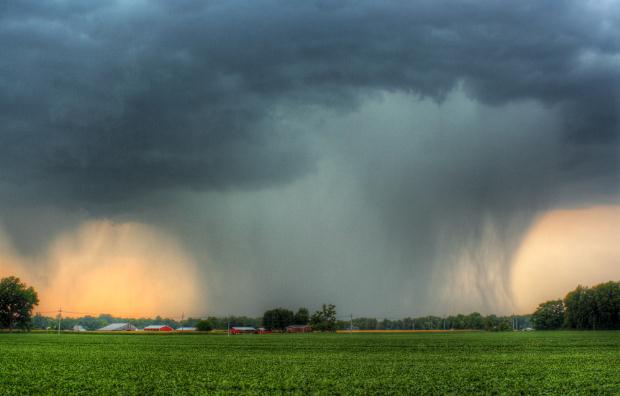


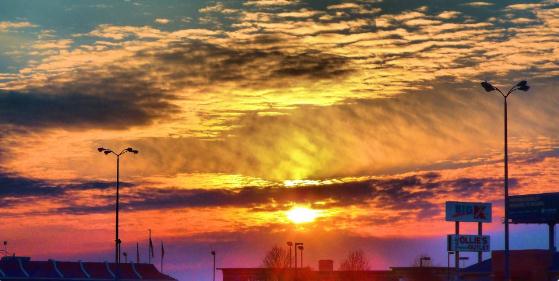
No comments:
Post a Comment